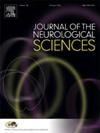Does engagement in cognitive activities contribute to the preservation of brain structure and connectivity in older adults?
IF 3.2
3区 医学
Q1 CLINICAL NEUROLOGY
引用次数: 0
Abstract
Aging is associated with changes in brain structure and connectivity and decrements in certain cognitive abilities. The benefits of active lifestyles in the aging brain and cognition in older adults have been widely described. This work aimed to explore the associations between brain parameters and cognitive performance in a sample of cognitively active adults who participate in University Programs for Seniors (UPS).
Method
forty cognitively active adults aged 55 or older underwent a neuropsychological battery and structural magnetic resonance imaging data (MRI), diffusion tensor imaging (DTI) and functional imaging at rest (fMRI). Composite scores for four cognitive domains were calculated and the sample was then divided into two groups: a group with no low scores and a group with one or more low scores across cognitive domains.
Results
the results show no association between brain volume and the risk of presenting low scores, and also an absence of association between brain volume, white matter integrity, functional connectivity and cognitive performance.
Conclusions
Active older adults might not follow the expected brain and cognitive age-changes expected in the general population. Participation in cognitive stimulating activities might then be a possible factor for brain maintenance and determinant for increasing the cognitive reserve and cognitive impairment resistance during aging.
参与认知活动是否有助于老年人大脑结构和连通性的保存?
衰老与大脑结构和连通性的变化以及某些认知能力的下降有关。积极的生活方式对老年人老化的大脑和认知的好处已经被广泛描述。本研究旨在探讨参加大学老年人项目(University Programs for Seniors, UPS)的认知活跃成年人的大脑参数与认知表现之间的关系。方法对40例55岁及以上的认知活动成年人进行神经心理电池和结构磁共振成像(MRI)、弥散张量成像(DTI)和静止功能成像(fMRI)检查。计算四个认知领域的综合得分,然后将样本分为两组:一组没有低分,另一组在认知领域中有一个或多个低分。结果表明,脑容量与低分风险之间没有关联,脑容量、白质完整性、功能连通性和认知表现之间也没有关联。结论活跃的老年人可能不会遵循一般人群预期的大脑和认知年龄变化。因此,参与认知刺激活动可能是衰老过程中大脑维持的一个可能因素,也是增加认知储备和抗认知损伤能力的决定因素。
本文章由计算机程序翻译,如有差异,请以英文原文为准。
求助全文
约1分钟内获得全文
求助全文
来源期刊

Journal of the Neurological Sciences
医学-临床神经学
CiteScore
7.60
自引率
2.30%
发文量
313
审稿时长
22 days
期刊介绍:
The Journal of the Neurological Sciences provides a medium for the prompt publication of original articles in neurology and neuroscience from around the world. JNS places special emphasis on articles that: 1) provide guidance to clinicians around the world (Best Practices, Global Neurology); 2) report cutting-edge science related to neurology (Basic and Translational Sciences); 3) educate readers about relevant and practical clinical outcomes in neurology (Outcomes Research); and 4) summarize or editorialize the current state of the literature (Reviews, Commentaries, and Editorials).
JNS accepts most types of manuscripts for consideration including original research papers, short communications, reviews, book reviews, letters to the Editor, opinions and editorials. Topics considered will be from neurology-related fields that are of interest to practicing physicians around the world. Examples include neuromuscular diseases, demyelination, atrophies, dementia, neoplasms, infections, epilepsies, disturbances of consciousness, stroke and cerebral circulation, growth and development, plasticity and intermediary metabolism.
 求助内容:
求助内容: 应助结果提醒方式:
应助结果提醒方式:


